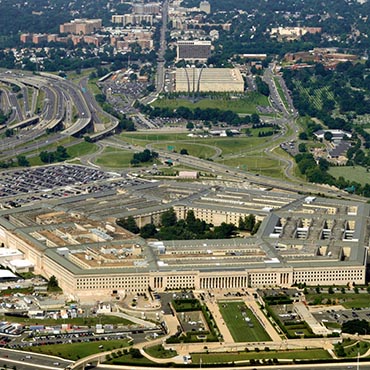Pentagon, Congress seek to avoid acquisition 'Groundhog Day'

Policymakers attempting to revamp how the military buys and manages weapons and IT systems will have to overcome bureaucratic inertia and the tendency of reform efforts to repeat themselves.

Defense officials and acquisition experts speak of an emerging consensus on Capitol Hill, in the Pentagon and in the defense industrial base on what acquisition reform entails. But the easiest things for all to agree on are that reform will take years and past efforts have fallen short.
Policymakers seeking to revamp how the military buys and manages weapons and IT systems will have to overcome bureaucratic inertia and the tendency of reform efforts to repeat themselves.
Experts cite a handful of recurring challenges dogging would-be acquisition reformers: an inexpert government workforce, inadequate use of commercial technologies outside the traditional defense industry and, more recently, sequestration-induced budget cuts.
"We seem to be in a kind of procurement 'Groundhog Day' where we recycle through a lot of the same recommendations," said Tom Sisti, senior director and chief legislative counsel at SAP America and a former adviser on acquisition in the Senate, during a Brookings Institution event this week.
Undersecretary of Defense for Acquisition, Technology and Logistics Frank Kendall told reporters June 13 that he is wary of being confined to old ideas on acquisition, and he shuns the phrase "acquisition reform" because it implies "that there are dramatic things we can do to significantly improve acquisition. It's more about a process of continuing improvement."
"My view on that is that we have used conventional wisdom, which tends to oscillate," he added. "If we're not doing very well right now, what we're doing right now must not be the right thing, so we'll try the other thing. And we've gone back and forth a few times."
Kendall is turning to data to avoid the trap of conventional wisdom. The Pentagon has just released its second annual report on the defense acquisition system, which found that increased competition for defense contracts could help keep costs down and improve performance, an intuitive point on which experts agree.
But competitive contracts are sometimes infeasible for major acquisitions because of "significant entry costs, technical data rights or infrastructure" challenges, the report states. During the media briefing, Kendall said he wants to address those issues by looking further down the supply chain. Back in April, Maj. Gen. Wendy Masiello, then the Air Force's deputy assistant secretary for contracting, told FCW the same thing, adding that subcontractors account for 60 percent to 70 percent of costs in large contracts.
Cost is king right now in the acquisition arena. "With the budget cutbacks, I think there is continuing to be a focus on outcomes, both on major programs and services and IT," said Jon Etherton, a senior fellow at the National Defense Industrial Association, at the Brookings event. "But folks are now starting to ask the question if we can actually afford the process itself that we currently have."
Rep. Mac Thornberry, the Texas Republican tasked with overhauling defense acquisition by House Armed Services Committee Chairman Buck McKeon (R-Calif.), told FCW last month that he is looking at underlying incentives for program managers to cut acquisition costs.
Kendall and Thornberry seem to agree on the need to address contract incentives. Kendall told reporters that he meets regularly with Thornberry to discuss the issue. Kendall has also tapped Andrew Hunter, director of the Defense Department's Joint Rapid Acquisition Office, to work with Thornberry and any other lawmaker focused on defense acquisition -- Sens. John McCain (R-Ariz.) and Carl Levin (D-Mich.), for example.
At the Brookings event, Hunter said there is a good deal of consensus among policymakers on how to tackle acquisition, but he acknowledged that his department struggles to keep pace with technological change.
"It is increasingly the case that the most cutting-edge technologies are not necessarily...being developed within traditional defense firms," he said. "They're happening in the commercial sector and particularly in the IT space. This is blindingly obvious and blindingly true."
Part of the emerging consensus is that IT systems, which can quickly become obsolete, must be treated differently from weapons in the acquisition process. But there are many overlapping regulations that govern IT acquisition, and Kendall said consolidating those rules is one of Hunter's chief tasks on the Hill.
"IT is also pervasive; it's in everything," Kendall told reporters. "So when you start to write rules about IT, you're writing rules, in a sense, for everything." He said he hopes language that consolidates those rules will show up in next year's defense authorization bill.
NEXT STORY: Acting DOD CIO goes public


